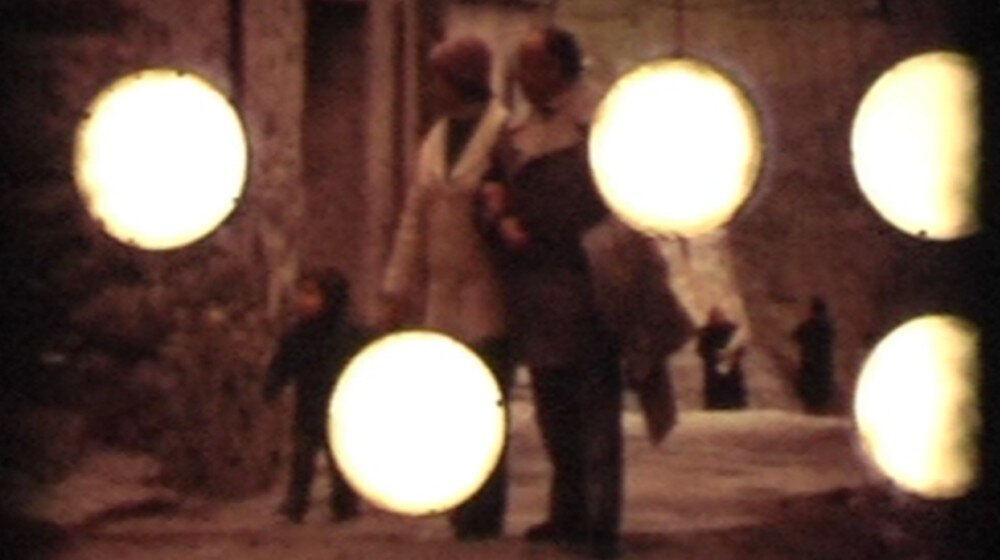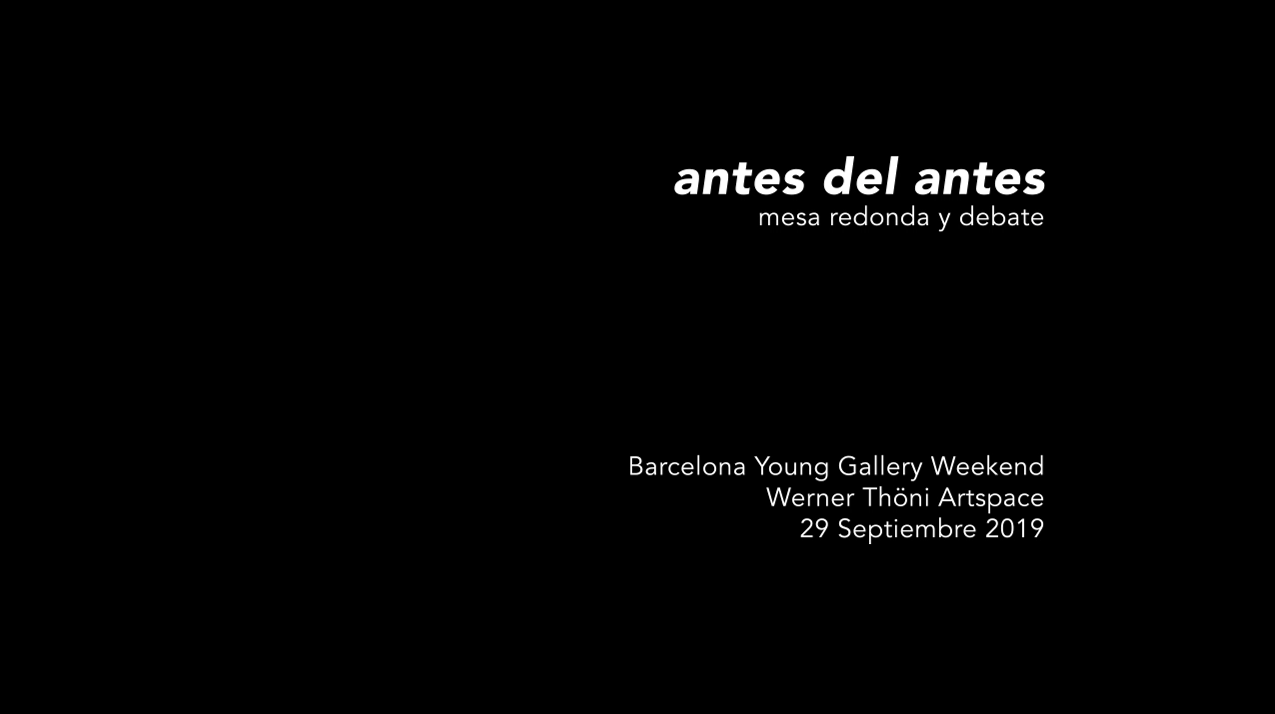Retracted Cinema
Xcèntric, CCCB
September 29, 2020
Introduction
My first thanks go to Carolina López - former director of CCCB’s Xcèntric - for inviting me to curate this program, to Gloria Vilches for doing the heavy lifting of overseeing every last organizational detail for the evening’s event, and to the Xcentric/CCCB staff. I’m grateful to all the filmmakers who contributed their work that is making the Retracted Cinema event possible and who also participated in a writing project about tonight’s program that will be published in a forthcoming issue of Found Footage Magazine (which will be available in the CCCB bookstore). Among these artists, I want to give special thanks to my collaborator and friend Eloi Puig for inviting me almost three years ago now to come work as a visiting artist with the Faculty of Fine Arts at University of Barcelona to support a sabbatical project from my university in the US and for introducing me to his work (Torvix in particular) and to his cadre of coding programmers. Both of these introductions made an indispensable mark in the formation of the concept of retracted cinema and in my own entry into computational filmmaking. Finally, I’d like to thank everyone who came out to see the work tonight, especially during these strange and cautious times of pandemic and social distancing.
The conceptual backdrop of Retracted Cinema signals an intersection of three well-established artistic paths:
(1) Oulipo, a literary movement based on the stipulation of constraints (algorithms) used to generate unexpected, experimental texts as so-called “potential literature.”
(2) Conceptual art, a gesture within the tradition of visual art that withdraws the declarative mastery from the artwork and underscores the work of art not as a terminal object but as a proposition that asks the question: what if this or that surface or object were taken to be a work of art, how would it function within the field of art and society, how could it catalyze critical dialogue and new artistic productions?
(3) Détournement (also known as “recycled cinema,” “compilation filmmaking,” “appropriation film,” and so forth), a strategy of recombination and recontextualization that turns existing films or film materials against themselves, giving them new meanings while revealing subversive ambiguities and creative possibilities already within existing films and demonstrating that, like all real objects, no film is ever identical to itself.
This three-fold backdrop may be helpful but it also fails to grasp the essential gesture of retraction in tonight’s program. The concept of “retracted cinema” began as an intellectual joke that supposed a reversal of the sweet rebellion of “expanded cinema,” which serves up a la mode the recontextualization of existing film material typically by accompanying the film projection with live action (for example, live music or movement). As a political endeavor – so the story goes – expanded cinema aims to wake the spectator from the coma-like state of consumptive entertainment and to rouse the zombie to see and seize the present moment through active critical thinking and participation. But surely from a political perspective, the desired liberation of the spectator in expanded cinema has been complicated by the fact that the mode of alienation and oppression in contemporary capitalism has expanded the demands of labor to an unprecedented degree to require participation, personal initiative, analytical problem-solving, collaborative participation, enjoyment, and even the utilization of sensitized emotional skill sets. Already long ago the structure was unmistakable that capital’s inherent expansionism would compel all areas of physical and spiritual life to open up as new market opportunities. Today we see the voluntary use of social media itself and more generally the internet click-through as a form of labor in which the user produces a product for predictive analytics in what has been termed (somewhat misleadingly) “surveillance capitalism.”
So the joke of a “retracted cinema” began to take on a more serious note as a legitimate question: What if instead of expanding cinema into other disciplines in an external movement that annexes other cultural territories (e.g. live action performance), what if cinema were to turn back into its own territory, fold back on itself through a set of instructions (algorithms, if you will) that express the idea of the work itself not as a problem solved but as a problem to be considered. Of course this retraction would form another idea of expansion, an inward expansion; however, the idea could bring about a different emphasis that raises questions, for example, about the binary matrix of passivity/activity on which so much avant-garde work has staked its ambitions.
The program tonight has been organized in a sequence that moves from the visually trackable (that is, works in which the viewer can readily track the transformations and driving concepts in the act of watching the films) to the more visually intractable (that is, those pieces that may warrant a bit of background before viewing). My comment here in no way privileges any of the films but is simply meant to mark a departure in the forms and procedures of retraction. (BTW, you can find many of these details already in written program en Castellano.) The first five pieces by Gonzalo Egurza, Albert Alcoz, Blanca Rego, Gregg Biermann, and Vítor Magalhães present moving image works that directly use the visual materiality of existing film footage (such as frames and film artifacts) as the site and means of recontextualization mediated by a specific structure. These first five films, rich in concept and experiential value, perhaps stand more on their own than do the five films in the second half of tonight’s program. Some of the computational films, particularly those in the second half, embrace the elusive character of the automaton with an interest in the performative dimension of the machinic.
Estampa’s ¿What Do You See, YOLO9000? (2019), the sixth film in tonight’s program lies somewhere in between these trackable and intractable camps providing a kind of bridge. This film investigates a contemporary artificial vision tool used in today’s digital industries and by government agencies for automatically tracking, recognizing and annotating images. Estampa’s work applies this trained neural network, containing a dataset of 9,418 words and millions of images, to appropriated selections from the world of 20th-century avant-garde film and archival footage with surprising results.
Next, Barbara Lattanzi’s Optical De-dramatization Engine (2015) launches an artist-designed software that remediates footage from Thomas Ince’s 1912 film, titled The Invaders, moving between the levels of image, film frame, and pixel. By design, each time Lattanzi’s software is launched, it presents a different variation of Ince’s film.
Peter Freund’s Floating Point (2020) utilizes an algorithm that re-presents and re-frames an iconic scene from Stanley Kubrick’s 2001: A Space Odyssey. The algorithm in real time embeds the original sequence within a larger (hinted-at) grid system that tabulates the sequence’s twenty-five shots. While presented in the flat, two-dimensional cinema screen, the structure of the grid itself forms an “impossible geometry” whose corners and edges have been folded back to meet each other in the manner of a conceptual origami.
Eloi Puig’s ongoing Torvix series (2011-Present) performs a software remediation of appropriated public YouTube videos based on an algorithm that responds to the position of each letter of the transcribed text spoken in the original footage and re-edits the material accordingly. Here, the algorithm that governs the re-edit correlates each letter of the alphabet with a specific editorial transformation which based on the transcribed vocal track creates a new montage out of the original video materials.
Finally, Kuku Sabzi’s Lost Footage (2020) mobilizes the predictive logic of text generation machine learning to regenerate scan-line by scan-line the 1967 Patterson-Gimlin film purportedly documenting a Bigfoot or Sasquatch traversing a forest in Northern California (USA). Lost Footage presents the result of running an algorithmic process for over a month to produce the 3,175 frames of the entirely new film.
Some of the filmmakers are here tonight to join in a discussion with the audience following the screening. They include:
Albert Alcoz, Home Movie Holes
Blanca Rego, Psycho 60/98
Marc Padro of Estampa, ¿Qué es lo que ves, YOLO9000?
Eloi Puig, Torvix
Peter Freund, Floating Point (programmers Marc Angles + Arnau Giralt in audience)
A final note: Many but not all of you will be accustomed to a degree of flicker in the work of experimental film. This is true of a few of tonight’s films, and I mention it to forewarn those who may have special sensitivities to flickering light.
I hope you find tonight’s program worthwhile and look forward to the discussion following the screening.










![Eljer Co. Two-Fired Vitreous China Catalogue, Bedfordshire No. 700 [Available in 1917 from the J. L. Mott Iron Works, 118 Fifth Avenue, NYC]](https://images.squarespace-cdn.com/content/v1/59bacc689f8dce7ac058829b/1604469936886-MMJ7XET2X5GD1M83ZLKA/Header.jpg)

























